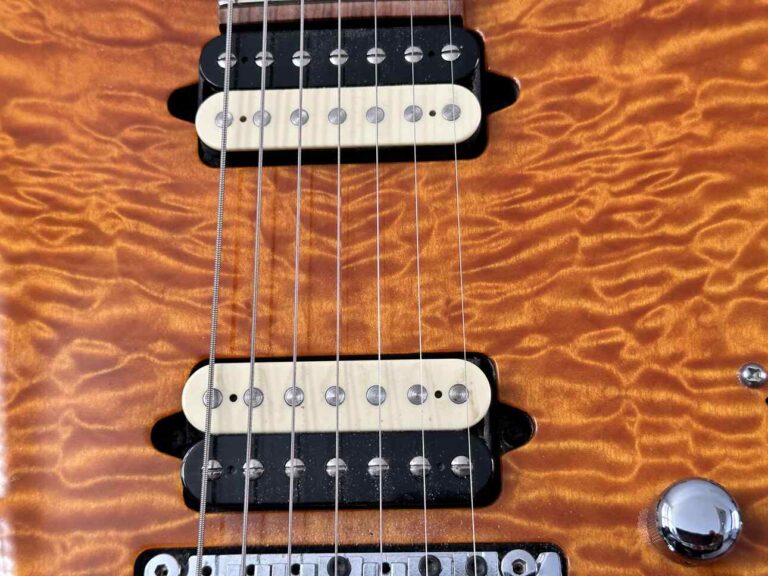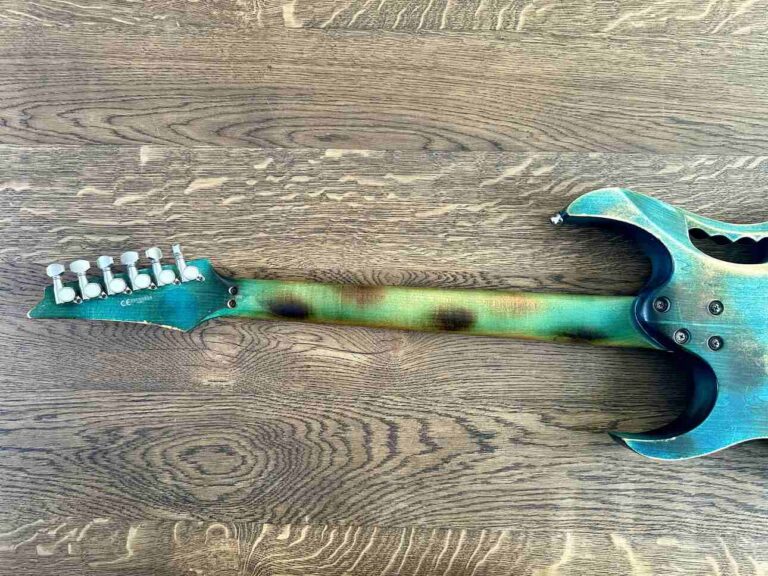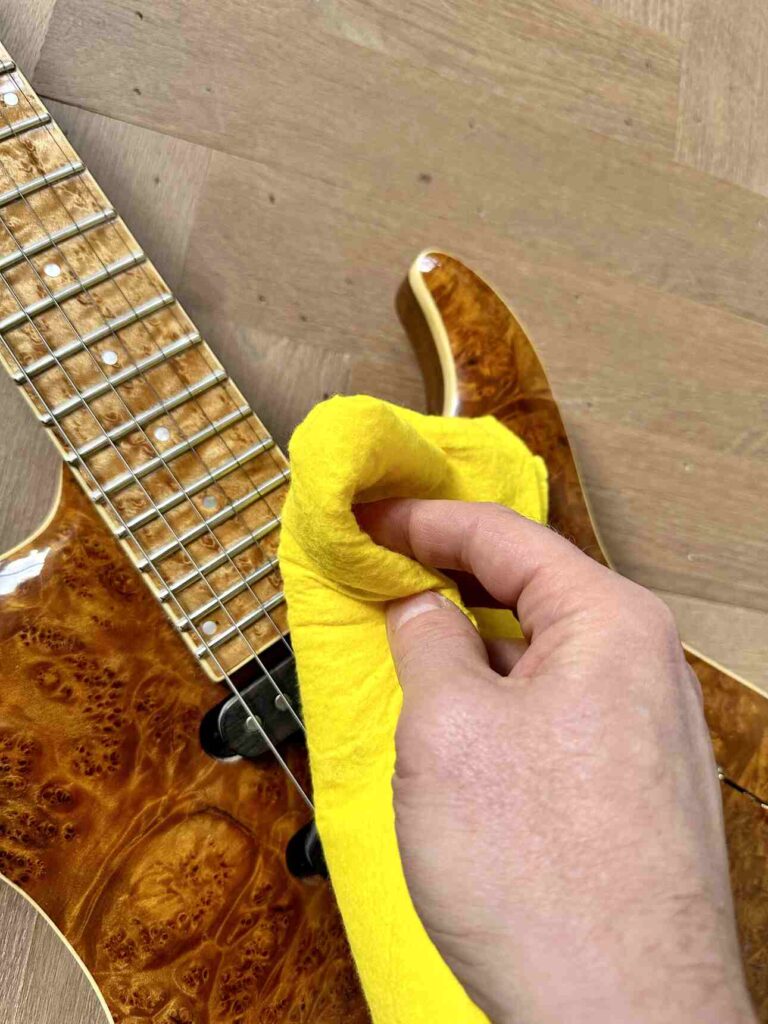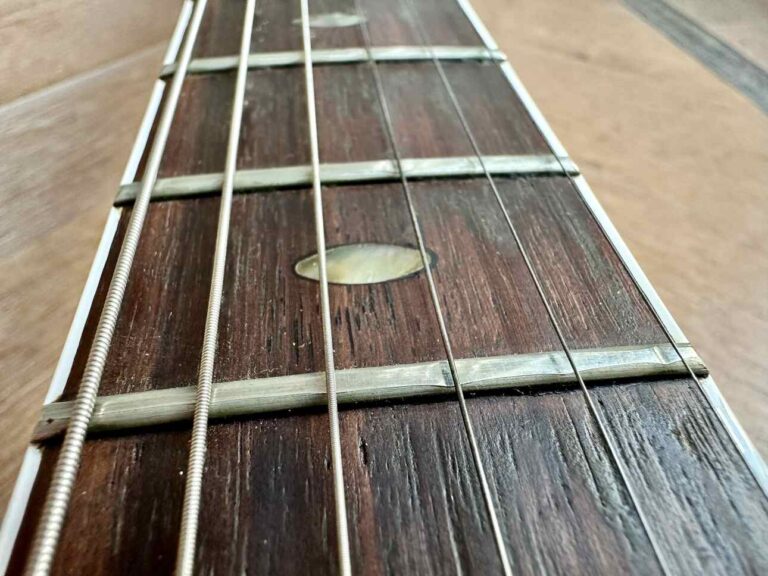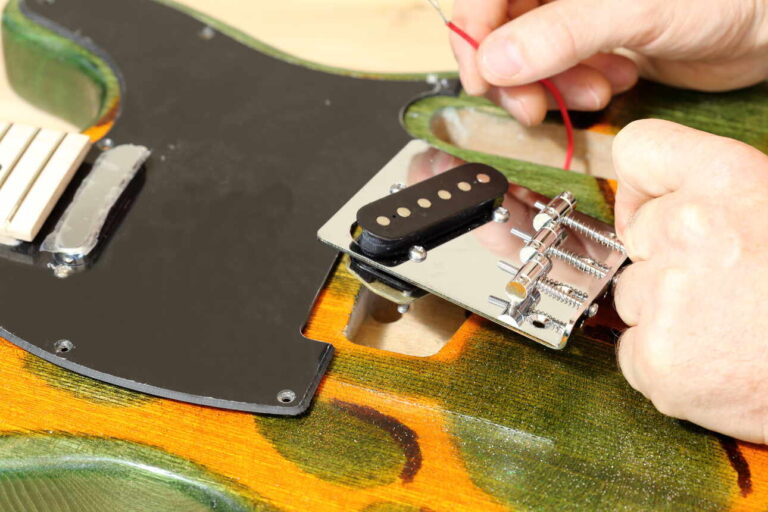Can You Mix Active and Passive Pickups in the Same Guitar?
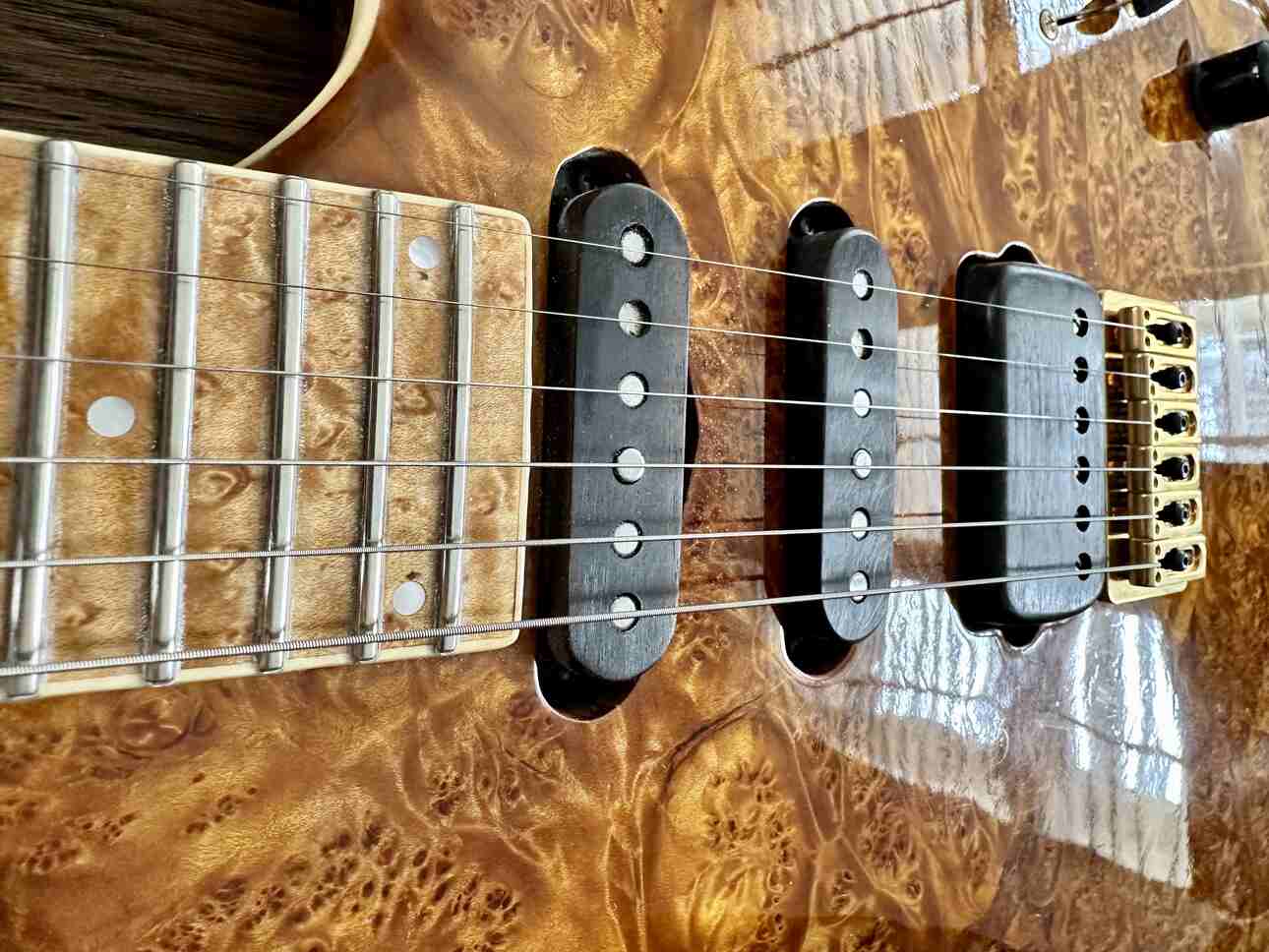
Mixing passive and active pickups on the same axe can be done, but beware: it isn’t easy. Active and passive pickups work pretty differently in picking up your guitar’s string vibrations and turning them into the electric juice that feeds your amp.
Slapping both kinds of pickups onto one guitar means you will have to think about how their electrical vibes and sound qualities will mesh. That might mean giving your guitar some extra love and tweaks.
But it’s possible, absolutely.
Wanna know how? Keep reading!
Key Takeaways
- You can put both active and passive pickups on the same guitar, but you’ve gotta think it through;
- Active pickups need to be powered up, and they’re ace for crystal-clear sound, whereas passive pickups are all about that cozy, rich vibe;
- If you’re gonna mix ’em, be ready to do some extra work on your guitar to get ’em to play nice together, sound-wise.
Active vs Passive Pickups
Components and Functionality
Active pickups have their own preamp and need a battery to get things going. This preamp cranks up the electric signal right off the bat, giving you a steady, hiss-free sound. They usually have less wire wrapped around their magnets, giving you a clearer sound from their magnetic field.
On the flip side, passive pickups don’t have a preamp, so there’s no battery fuss. They’re wrapped up with more wire, which bumps up the inductance and gives you a warm, full-of-harmonic goodness sound. Passive pickups totally depend on the guitar strings’ vibes to make their magic happen.
Active Pickups:
- Battery power needed;
- In-built preamp;
- Not so many windings;
- Low noise and reliable output.
Passive Pickups:
- No battery? No problem;
- More windings;
- Harmonically rich, toasty tones.
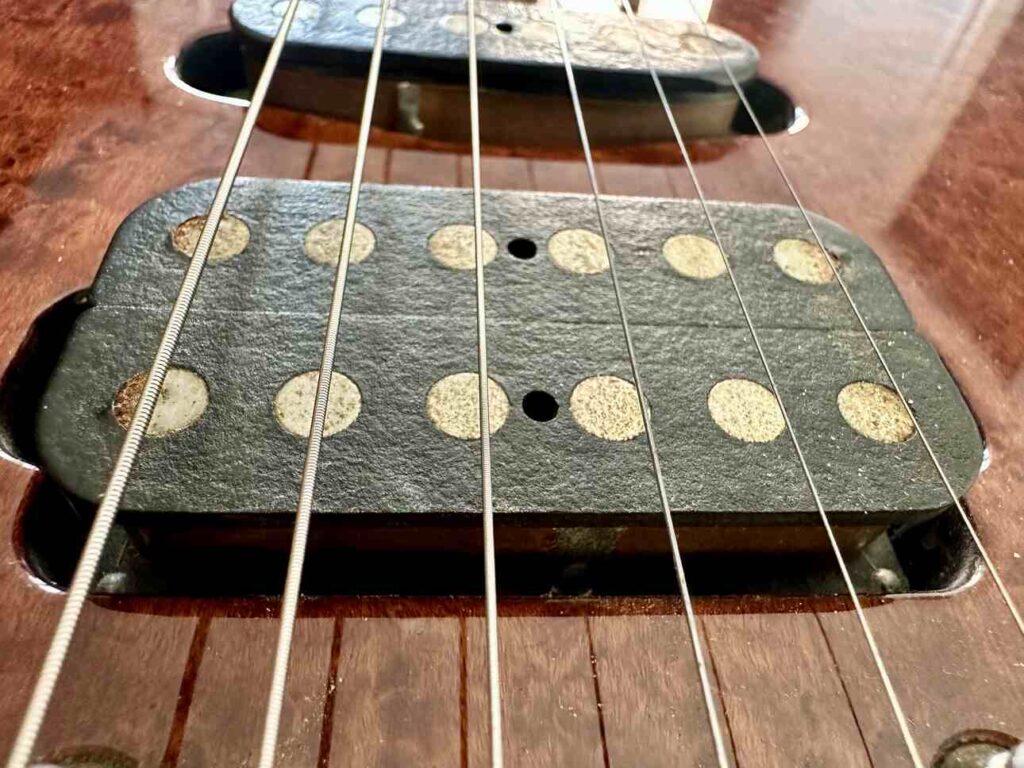
Passive Guitar Pickups Explained
Characteristics of Passive Pickups
Passive pickups are made up of a magnet and coils of copper wire, and they’re the classic choice for electric guitars. You won’t need a battery for these guys because they use the magnet’s field to whip up your guitar’s sound.
These passive pickup sounds are usually not as loud as active ones, but that’s part of their charm. They give you a warm and full of resonance sound, which is a big deal for styles like blues and rock. They’re great at picking up the natural sound of your guitar strings and letting the wood’s personality shine through in the tone.
Popular Brands and Variations
Many brands are known for cranking out top-notch passive pickups, and Seymour Duncan and DiMarzio are right up there with the best of them. They’ve got a whole lineup of single coils and humbuckers. Each brand brings something special to the table, helping to shape the unique sound of a guitarist’s rig.
Here’s a list:
- Seymour Duncan: A big name for humbuckers that can handle just about anything;
- Fender: They’re the go-to for bright-sounding single-coil pickups;
- Lindy Fralin: hand-made, boutique quality, offering a range of tones from vintage to modern;
- Gibson: Home of the legendary PAF humbucker with its deep, warm vibes;
- DiMarzio: Renowned for their innovative designs and known for their suitability to heavy music genres.
Passive Pickups and Natural Dynamics
What’s cool about passive pickups is how they vibe with your play. They’re all about less fuss on the inside, so they’re super good at catching the little differences in how you pick or strum. So, if you’re going easy on the strings, your sound will be more chill, and if you’re really giving it some muscle, your tone will pack a punch.
Guitar players are big fans of this because it lets them pour a ton of expression into their music. They get to sculpt their sound right from their fingertips, which is awesome for getting the feel they want.
Cool about passive pickups is
how they vibe with your play
Active Guitar Pickups Explained
Characteristics of Active Pickups
Active pickups are the heavy hitters with their strong signal and super clear sound; thanks to that preamp, they’ve got built right in. This little boost cranks up your signal and keeps the buzz and unwanted noise at bay so you get a clean and steady sound.
But here’s the thing: active pickups are like the night owls of guitar pickups – they’re always on. They need a bit of juice from a power source, like a battery, to do their thing.
Popular Brands and Models
When the chat turns to active pickups, brands like EMG and Fishman Fluence often lead the pack. EMG’s got a rep for setting the bar high with pickups about dependability and crisp sound. On the other hand, Fishman Fluence is making waves with its fancy multi-voice options and cutting-edge design.
Integrating Preamps and Power Sources
Every active pickup has a preamp built right into it, and that’s key for getting a handle on your sound’s dynamics. To power this setup, you’re going to need an onboard power source, and that’s usually a 9V battery.
Now, because you’ve got this extra gear tucked in there, it will take up a bit more room inside your guitar’s body. That’s something to remember if you’re thinking about adding them.
Combining Active and Passive Pickups
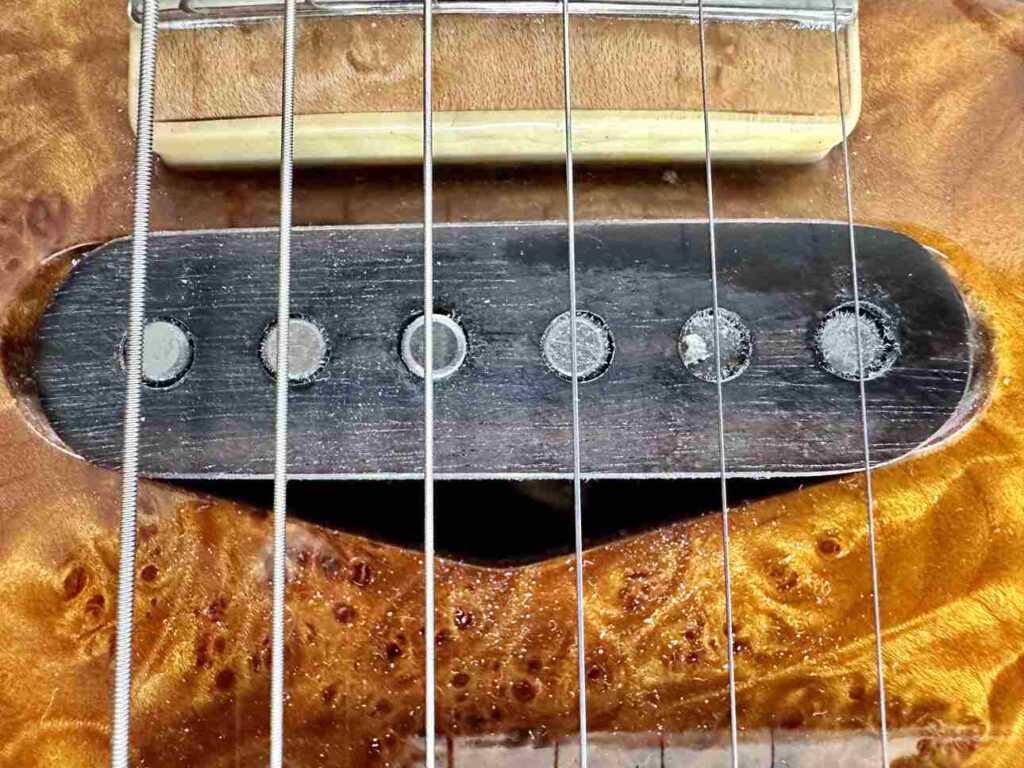
Mixing active and passive pickups in an electric guitar is totally doable. This combo can open up a whole new world of sound options. But you’ve got to think about how their different electrical requirements and the way they spit out sound will work together.
Feasibility and Considerations
Throwing both active and passive pickups into your guitar might seem like a bold move for getting all sorts of tones. But it’s not without its techy challenges. Getting a grip on what sets these two types apart is crucial.
Active pickups have a battery-powered preamp that amplifies their signal. They deliver a steady, clean tone. Passive pickups just go with the flow of the strings’ vibes. To get them to play nice together, the guitar’s innards need to be wired up just right so there’s no signal squabble.
Wiring and Electronics
You need to set up a dual-circuit layout to get your guitar’s active and passive pickups to work together. This prevents the active pickups’ need for power from messing with the passive ones.
You’ll want to have separate volume and tone knobs for each kind of pickup. And if you’re jamming on passive pickups, think about having different output jacks. Or a switch that can cut the active circuit out of the picture.
For the nitty-gritty on how to wire this up, you might want to peek at some in-depth wiring charts or step-by-step guides from the pros. You can find resources like these at places like EMG Pickups or other expert sites specializing in guitar electronics.
Balancing Output Levels
The volume game between active and passive pickups can be pretty uneven. Active pickups usually hit harder. They have a higher output.
You’ve got to fiddle with the pickup heights to get them to play nice together together. Drop the active pickup down a bit, or give the passive one a boost to even things out.
Some players also bring in an external preamp or mess with the EQ to fine-tune the balance even more. But it’s not all about how loud they are – it’s about mixing those sounds just right to hit the vibe you’re going for.
Installation and Modification
Installing Mixed Pickups
Putting both active and passive pickups in your guitar is a bit more of a job than a regular setup. Active pickups need a power source, like a 9V battery, and they have their own preamp stuff. This can mean your control cavity will get a bit packed.
You’ve got to think about where that battery will live. Maybe even change the routing to make room for the extra electronic bits.
Technical Challenges
The main tech headache when mixing pickup types is that output and impedance do not match. Active pickups usually pack more punch and have less resistance to the signal than passive ones.
This mismatch can mess with your volume balance when you switch between pickups. You might need to use coupling resistors or have dedicated volume knobs for each pickup to fix this.
Getting the output levels right means your amp gets a steady signal, no matter which pickup you’re using.
Switching Between Pickup Types
Adding a switch that lets you flip between active and passive modes is a slick way to get the best of both worlds from your pickups. This little upgrade can up your guitar’s game. This allows you to switch from the sharp, defined tones of active pickups to the rich, detailed vibes of passive ones.
But this switch has got to be crafted to manage the different electrical traits of each type of pickup. You’ve got to make sure it doesn’t mess with your signal’s quality or add any extra hiss.

Practical Usage and Sound
When thinking about blending active and passive pickups in your guitar, keep in mind the tonal range you can unlock. This kind of setup hands you a whole palette of sonic expressions. This is a big deal if you’re a guitarist who loves having a lot of sound options at your fingertips.
Tonal Variations and Flexibility
Their onboard preamp gives active pickups a strong, steady signal. If you’re playing in situations where your notes need to cut through or if you’re shaping your sound precisely, an active-equipped guitar is your best friend.
Passive pickups bring warmth and dynamic response that’s just right for soulful blues or classic rock vibes. Mixing it up with an active pickup at the bridge and a passive one at the neck gives you a killer combo: biting leads and smooth, rich rhythm sounds all in one guitar.
Selecting Pickups Based on Playing Style
Your playing style is a big decider in whether you’ll like passive pickups or prefer active ones.
If you’re into genres where precision and speed are everything, active pickups could be your ticket to that super-sharp sound. But if you’re putting a lot of feeling into your playing, you might find the subtle touch of passive pickups is just what you need.
Impact on Performance and Recording
Rocking a guitar with active and passive pickups can make sound changes in live gigs a breeze. Without swapping guitars, you can jump from the smooth sounds of clean jazz to the hard-hitting vibes of distorted rock.
This versatility is a serious win in the recording booth, too. You get to mix or focus on the unique sounds of each pickup, giving you a range of tones to play with.
Having active and passive pickups in one guitar can be a huge plus for your creativity. But you’ve got to make sure everything’s balanced and tweaked just right when you set it up so you don’t hit any snags with volume or tone control.
Getting the hang of these little details means you can make the most of this setup for all your different sounds.
Frequently Asked Questions
What’s the process for converting a guitar from passive to active pickups?
To switch your guitar from passive to active pickups, you need to fit in a preamp and find room for a battery. This might mean making extra space inside your guitar’s body.
How do I wire active pickups in a guitar that has passive ones?
To wire active pickups in a guitar that used to have passive ones, you have to take out the old electronics and put in new ones that work with active pickups, like different pots and a stereo jack.
What are the possible issues when mixing active and passive pickups in a guitar?
When you mix active and passive pickups, you might run into issues like uneven output levels and changes in tone. You’ll probably need to tweak the circuits, maybe with separate volume controls, to get their electric vibes to match up.
Are EMG pickups typically active, passive, or available in both types?
EMG is famous for its active pickups but offers passive options as well. The active pickups are a hit for their steady sound and quiet operation.
Is an active preamp compatible with passive pickups in a guitar?
Yep, you can pair an active preamp with passive pickups to pump up the volume and tweak the tone. Just remember, you’ll need a battery to power that preamp.
What modifications are needed to add extra pickups to an electric guitar?
To make more space, you might have to cut into the body to add more pickups to your electric guitar. You can also get a new pickguard or control plate and redo the wiring to connect everything properly.

